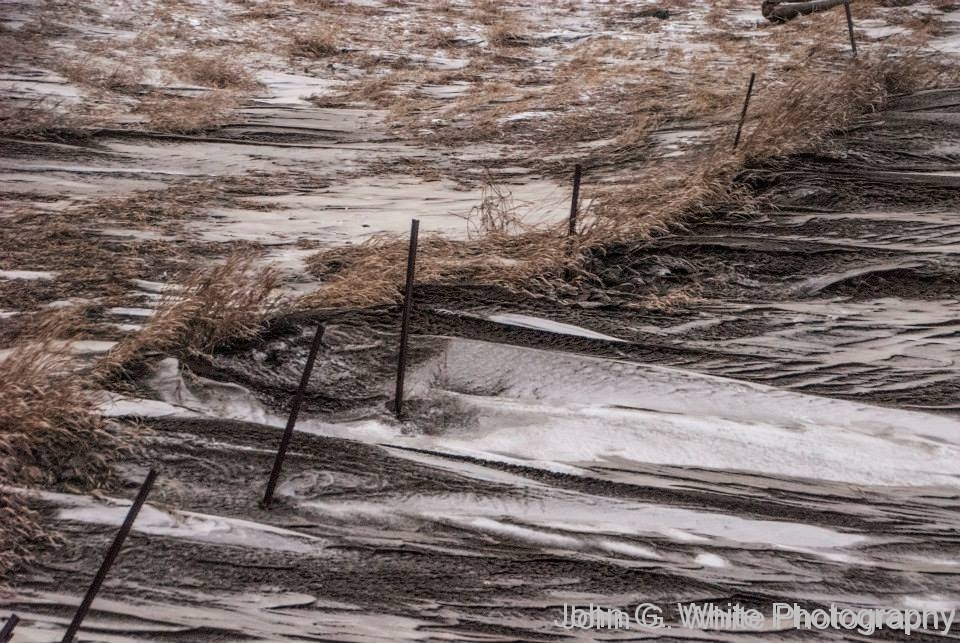You may have seen the photo exhibit by a friend of mine, John White. It was touring the region during the last year (and prints are available for sale here). His alluring and seemingly abstract black and white swirls are actually color photos of wind-eroded topsoil and snow. Snirt — your new word for the day — that is what locals call dirty snow that is commonly seen this time of year in the farming areas of the state.

Soil is slow in forming — and by slow I am talking on the order of thousands of years. So although it makes a pretty picture, it is more than just a shame when it blows away from an area where somebody had hoped to make a living off of it.
Eventually that snow melts and the dirt is carried through ditches to cloud and clog local waterways. Even more damage is done by the stuff that is attached to the soil — the fertilizers we have applied — in particular, phosphorus. It tends to hold on tightly to the soil which means that when the soil is transported to the local lake or river, the phosphorus fertilizes them. When the water warms up, you get the familiar green scum that makes most lakes in Minnesota’s corn and soybean belt unappealing and sometimes even deadly. When the scum dies and settles to the bottom of the lake and decomposes, it uses up the oxygen in the lake. A recipe for a mini dead zone and fish kill.
An ongoing study being conducted in the Root River by Minnesota Department of Agriculture staff and led by Kevin Koehner shows that 48% of the dissolved phosphorus came off the fields in March when the ground was frozen. That would be your snirt and really, any other soil that is not held in place by plants that can easily move when water flows across frozen fields.
Simplest solution to keeping soil in place over the winter? Cover crops. That is something you plant after harvest and plow under in the spring when you plant like winter wheat. Even better is perennial cover like alfalfa that rarely exposes the soil. Farmers may need incentives to incorporate practices that don’t help their bottom line. That is where state and federal policy come in. We will be encouraging the adoption of state policies that help improve water quality during this time of year while the legislature is in session and snirt is in the wind.
— Carrie Jennings, research and policy director